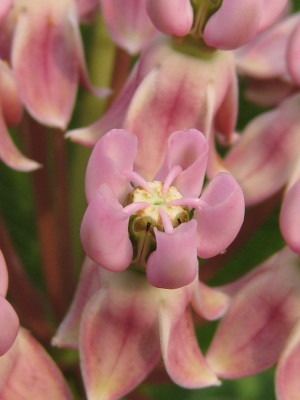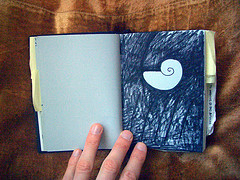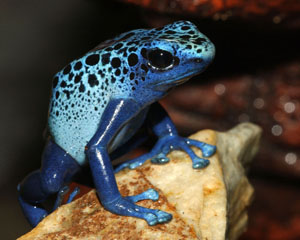High up on the eighth floor
the view spreads a smorgasbord
of warm golds, tangerines and greens,
lit by bronze back-light across the dream.
He could almost smell that odd burnt Fall
bouquet through the plate glass picture wall.
His world held a long, slow major chord.
The spacious room flooded with natural light.
(this would be a luxury efficiency in NYC)
He watched cars and trucks rush to and fro
along the highway through the forest, appearing
and disappearing into the waiting trees.
From up here the little bodies behaved
with such conviction, trusting the highway’s
path with utter certainly. The scene was proffered
a peaceful silence by the muted, glass plated score.
But the air up here is not so rare
as he thought it might have been,
considering the pain it took to get up those all those floors.
At the end of his third day in this room, Dorn felt truly refreshed, rested and ready to face the impending surgery to remove his ailing gall bladder. The pain which brought him here had now been relegated to yet another chapter in his living novel of that subject. But the experience of it had reminded him of how much of an unlikely teacher it had been.
Pain is no friend to anyone. It stretches and warps time. It removes even the most secure protections of philosophy and spirituality from any soul it inflicts. The self is laid bare. As he lay 2 hours in the ER 3 nights ago, moaning loudly for relief, Dorn reviewed all the pain he’d been through, mostly in the last 12 years.
All this began with cancer, the surgery for which he awoke from in a blazing supernova of raw pain; though, oddly, a minute before while coming out of anesthesia coma, he had asked for a Banana Split Sundae. With a dozen parts of his guts rearranged and re-attached, it would be 6 weeks before the Sundae dream could come true. Meanwhile, he had a morphine button which could be activated only every five minutes.
It is possible for time to stop. It stops when a train is about to hit you in the face, or perhaps after your gut has been hit and you are waiting for the pain to start. Or when you are waiting for a lover to return from a dangerous trip. When it starts again, it is not like normal daily time, but now moves counter to the holding time, counter to the waiting, not faster, but deeper, like in honey.
The awakening after his major cancer surgery was literally gut wrenching. Each five minutes took at least an hour. Sometimes one minute took a week to pass as he watched the clock, with the attentiveness of a dog watching the door for it’s deceased owner to return. After he pressed the button, or rather when he pressed it and it finally worked, since he pressed it many times in the seconds before 5 minutes were up, something happened which could only be described as a spiritual message being sent to each screaming nerve cell, soothing it momentarily, as if covering with a warm blanket each suffering pain victim in the world all at once. Then within a minute or two, the deceptive comfort is slowly realized and each cell begins spreading the word of truth, “We must scream in agony, for it is our destiny until its cause is eliminated.”
Pain had been his nearest relative for a good part of the dozen years since then, a relative which he’d rather not see but who keeps showing up uninvited and spins his life into chaos during that time. It’s tricky to build a lasting structure of behavior and habit when continuity is lacking. If you walked 10 steps through a field and tripped in 4 holes, you would continue only with trepidation.
He also believed that abdominal pain accompanied by nausea could be the most un-grounding kind of painful experience, an earthquake at the center of emotional open-ness. That perspective was only natural, since that’s the kind of pain he had experienced most. He’d also had migraines, a close second for the most disruptive pain. He had never broken a bone, never been shot. He had been punched to the ground once. That hurt, but his ego suffered more than his body. When he was 6 or 7 he dove into a shallow cement pool head first. The water turned a pretty shade of bright red around his head. However, that pain diminuendoed after a quick crescendo. As long as it’s receding, even the worst flood of pain seems less threatening.
But combine gnawing, constant pain in the nerve filled center of your gut, where your gut reactions come form, with the most universally ignominious of feelings, nausea… now there’s a combo platter from the fast food counter of Hell’s Kitchen!!
What had this intimate familiarity with such black pain gained him? Stories of pain without some glory are a hard sell. The war vet gets credibility for his pain because he has the heroism to match it. For the most part he had treated pain the same all a long, as something private and to be avoided. Thought he knew and believed that avoiding his pain was a natural right, he also knew the side affect could be a pleasant slowing of time, a poetic state of mind and body where the world became a large terrarium to be observed and enjoyed from a distance.
Alas, one of the almost inevitable side effects of being in pain so much is that one becomes all to eager to reach for that “blanket” of treatment to temporarily sooth the fires of all the wretched suffering. One of the limits of scientific knowledge is how to treat pain without resorting to narcotic “cover up” drugs (morphine or its derivatives), which don’t alleviate the pain as much as coat the consciousness of the sufferer with opiate honey to dispel the worst of the experience. The pain doesn’t go away, it just appears much, much further away. It’s a powerful illusion, but it’s still the best we have.
The pleasure of the release of pain under a narcotic blanket is two fold. First,the body’s own endorphins are released as the stress of pain subsides. Second is the the known effect of opiates, the softening of all edges in life’s pushy world. This narcotic buzz is well known from the poetry and philosophy it has inspired, from Baudelaire to Poe to Arthur Conan Doyle (Sherlock Holmes). Even American thinkers such as Jefferson, Emerson and Thoreau used opium as we use a glass of wine to relax. As the poem in the beginning of this post implies, the world seems clearer and more beautiful from the narcotic distance, but it is neither so rare nor so distorted as either end of its experience might seem. That is to say, it is not as evil as as its detractors say, nor as beautiful and singular as that addict might think.
The problem of addiction to pain meds is global and severe. The prevailing solution is to place a hefty dose of bureaucratic doubt into the system of health care. Suffering in the ER and many hospital rooms is the counter-balancing epidemic resulting from conservative doubt of pain to filter out pain med. abuse. A patient needs to really show suffering to convince the painless, comfortable skeptics surrounding him. That kind of commonly acceptable lack of compassion is reprehensible.
One respected European doctor had explained to him a radical minority opinion; “Pain” he believed, “is an evolutionary survival mechanism which is no longer needed in modern, human civil society. Pain should be treated immediately and with complete compassion and trust for the sufferer. Any problems of addiction should be handled secondarily.” Dorn agreed. And it wasn’t without experience of both ends, pain and addiction.
His addiction to pain meds had caused ripples of problems in his life, but none worse than the suffering of the pain itself. In fact, addiction had not so much created problems as covered ones which might have otherwise come to light in a more timely fashion. The deepest problems are the ones we run from when we resort to pain meds to soften the edges of a normal day. For Dorn, his depleted self-esteem was easier to inflate temporarily with the “distancing” effect of pain meds. Brush fires are easier to consider with authority when their heat seems far away. Composure can be maintained, and “normality” along with it.
Little of the experience of pain serves common use to the world, except perhaps a lesson in compassion for other’s suffering. But he felt he had learned much about who he is, was and could be. He could survive suffering. Mostly it had taught him how frail he really is, we all are, really, that our accustomed patent approval of our selves is often just a blink away from agony. Funny thing is, knowing that made him feel stronger, not weaker. Moment to moment self-approval and confidence is more real than the illusion of security as something continuous and solid.
Not such rare air really, but worth the climb to get there.
 I just brushed one of my cats before letting him out. At first I did it without thinking, then I let myself relish the pleasure of connecting with this little soul and giving him pleasure while grooming him.
I just brushed one of my cats before letting him out. At first I did it without thinking, then I let myself relish the pleasure of connecting with this little soul and giving him pleasure while grooming him.


